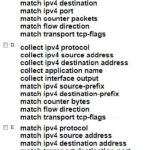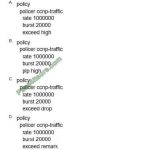As the popularity of the 350-801 CLCOR exam continues to grow, more and more people are asking if there is an effective 350-801 study guide to prepare for the exam. Listen, we recently updated the 350-801 dumps (r 9.19) to be your ideal 350-801 CLCOR exam study guide to effectively ensure you pass the Implementing and Operating Cisco Collaboration Core Technologies exam.
Welcome to our website: https://www.pass4itsure.com/350-801.html Get a 350-801 dumps (r 9.19) as the latest study guide to passing the 350-801 exam.
Is it necessary to learn the basics of the Cisco 350-801 exam?
Learning the basics will help you fully understand the Implementing and Operating Cisco Collaboration Core Technologies exam. Therefore, candidates who plan to take the Cisco 350-801 exam must learn the basics of Cisco CLCOR 350-801 to help them prepare for the exam.
Here I give you a brief introduction to the Cisco 350-801 exam:
The real 350-801 exam requires you to answer 55-65 questions in 120 minutes and score 750-850 to pass (out of 1000).
350-801 exam-related certifications for the 350-801 exam are:
- CCNP Collaboration – Core Exam 350-801
- CCIE Collaboration – Qualifying Exam 350-801
- Cisco Certified Specialist – Collaboration – 350-801
Looking for useful learning resources to take the Cisco (CLCOR 350-801) exam?
- Official Cisco Training – Implementing Cisco Collaboration Core Technologies (CLCOR)
- Cisco Virtual Internet Routing Lab Personal Edition (VIRL PE)
- Cisco Modeling Labs
- Pass4itSure 350-801 dumps (r 9.19)
- CLCOR training videos
- CLCOR study materials
How do I prepare for the (valid) 350-801 CLCOR exam? 350-801 dumps?
First of all, you should be familiar with the basics of the 350-801 CLCOR exam.
Then choose Pass4itSure 350-801 dump (r 9.19) as your study guide.
Finally, strengthen your confidence and practice the 350-801 exam questions carefully to achieve proficiency.
Where can I find the free 350-801 dumps exercise, the latest version?
You can get it here, with free 350-801 exam practice for you below.
Below is a free update of the 350-801 dumps practice test share:
Download free 350-801 exam questions (PDF):
https://drive.google.com/file/d/18F1V3B6FQ76MHSF_GTvVdRVvwOBzCYgY/view?usp=sharing
Q1. Which transport protocol does the application layer protocol SNMP use?
A. XML
B. UDP
C. SIP
D. HTTP
Correct Answer: B
Reference: https://www.geeksforgeeks.org/simple-network-management-protocol-snmp/
Q2. What are the last two bits of a DS field in DiffServ Byte used for?
A. AFxy
B. ECN
C. INC
D. RMI
Correct Answer: B
Q3. A network administrator deleted a user from the LDAP directory of a company. The end user shows as an Inactive LOAP Synchronized User in Cisco Unified Communications Manager. Which step is next to remove this user from Cisco Unified Communications Manager?
A. Delete the user directly from Cisco Unified Communications Manager
B. Restart the Dirsync service after the user is deleted from the LDAP directory.
C. Execute a manual sync to refresh the local database and delete the end user.
D. Wait 24 hours for the garbage collector to remove the user.
Correct Answer: D
Q4. What are the two characteristics of priority queueing? (Choose two.)
A. It guarantees bandwidth for user-defined traffic classes.
B. It applies strict priority to user-defined traffic classes.
C. It allocates an equal share of the bandwidth to each flow.
D. It places traffic Into one of four queues.
E. It ensures that critical traffic queues are serviced first.
Correct Answer: DE
Q5. Which two steps should be taken to a provision after the Self-Provisioning feature was configured for end users?
A. Dial the self-provisioning IVR extension and associate the phone with an end user.
B. Plug the phone into the network.
C. Ask the Cisco UCM administrator to associate the phone with an end user.
D. Enter the settings menu on the phone and press *,*,# (star, star, pound).
E. Dial the hunt pilot extension and associate the phone with an end user.
Correct Answer: AB
Q6. How does an administrator make a Cisco IP phone display the last 10 digits of the calling number when the call is in the connected state, and also display the calling number in the E.164 format within the call history on the phone?
A. Configure a translation pattern that has a Calling Party Transform Mask of XXXXXXXXXX.
B. On the inbound SIP trunk, change Significant Digits to 10.
C. Change the service parameter Apply Transformations On Remote Number to True.
D. Configure a calling party transformation pattern that keeps only the last 10 digits.
Correct Answer: C
Q7. Which IP Precedence value is used to classify a call signaling packet?
A. 6
B. 5
C. 4
D. 3
Correct Answer: D
Q8. Which statement describes the Maximum Serving Count service parameter of the Cisco TFTP service on Cisco Unified Communications Manager?
A. It specifies the maximum number of files in the TFTP server disk storage.
B. It specifies the maximum number of TFTP client requests to accept and serve files at a given time.
C. It specifies the maximum file support by the Cisco TFTP service.
D. It specifies the maximum file counts, in the cache as well as in disk, that are supported by the Cisco TFTP service.
E. It specifies the maximum number of TFTP client requests to accept and serve files in a 120-minute window.
Correct Answer: B
Q9. An engineer configures a Cisco Unified Border Element and must ensure that the codecs are negotiated to meet the ITSP requirements. The ITSP supports G.711ulaw and G.729 for audio and H.264 for video. The preferred voice codec is G.711. Which configuration meets this requirement?
A. Voice class codec 10 codec preference 1 g711ulaw codec preference 2 g729r8 video codec h264
dial-peer voice 101 VoIP session protocol sipv2 destination el64-pattern-map 1 voice-class codec 100
B. Voice class codec 10 codec preference 1 g711ulaw codec preference 2 g729r8
dial-peer voice 101 VoIP session protocol sipv2 destination el64-pattern-map 1 voice-class codec 10
C. Voice class codec 10 codec preference 1 g711ulaw codec preference 2 g729r8 video codec h264
dial-peer voice 101 VoIP session protocol sipv2 destination el64-pattern-map 1 voice-class codec 10
D. Voice class codec 10 codec preference 1 g729r8 codec preference 2 g711ulaw video codec h264
dial-peer voice 101 VoIP session protocol sipv2 destination el64-pattern-map 1 voice-class codec 10
Correct Answer: C
Q10. Which user group is targeted by MRA services?
A. Call center agents who dial out to remote customers
B. Mobile workers in a host desk environment at HQ who log in every morning at the possibility a different phone
C. Production floor users who need wireless mobility in remote areas of the factory
D. On-the-go mobile workforce who connect to corporate phone services using their own mobile device
Correct Answer: D
Q11. How does Cisco Unified Communications Manager perform a digit analysis on-hook versus off-hook for an outbound call from a Cisco IP phone that is registered to Cisco Unified CM?
A. On-hook, Unified CM performs a digit-by-digit analysis, off-hook, Unified GM considers all digits were dialed and does not wait for additional digits.
B. On-hook, Unified CM considers all digits were dialed and does not wait for additional digits, off-hook, Unified CM performs a digit-by-digit analysis.
C. On-hook, by pressing the digits and entering “#” to process the call, Unified CM performs a digit-by-digit analysis; of the hook. Unified CM analyzes all digits as a string.
D. On-hook, no digit analysis is performed, off-hook. Unified CM requires the “#* to start the digit analysis.
Correct Answer: B
Q12. Which version is used to provide encryption for SNMP management traffic in collaboration deployments?
A. SNMPv1
B. SNMPv3
C. SNMPv2
D. SNMPv2c
Correct Answer: B
Q13. Which two features of Cisco Prime Collaboration Assurance require advanced licensing? (Choose two.)
A. real-time alarm browse
B. multicluster support
C. call quality monitoring
D. email notifications
E. customizable events
Correct Answer: BC
……
(The above questions are only partial, more in the full 350-801 dumps (r 9.19).)
For more 350-801 (CLCOR) practice questions, click here.


